Angela Ackerman's Blog: Writers Helping Writers, page 22
May 21, 2024
Behind the Scenes: How to Craft Compelling Backstory
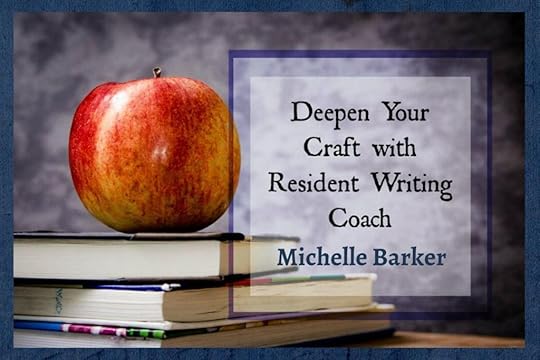
A character���s backstory is where all the gold is buried in terms of their motivations and misbeliefs. Who we are in the present depends to a large extent on what has happened to us in the past. It���s critical for you to know your protagonist���s personal history���but that���s a pretty easy thing to work out. There are numerous character questionnaires available on the internet that you can spend hours filling out.
What you do with that information, however, is trickier���and everything depends on it. If you front load your novel with your protagonist���s life story or give them a variety of quirks and habits that don���t get used in any meaningful way, you will be squandering all that valuable information you amassed and possibly even turning readers away.
Creating Connection
In your opening pages, your main objective is to create connection between the reader and the protagonist. But we don���t usually connect with someone who tells us their life story. If we���re unlucky enough to sit next to that person on a long bus ride, we get up and move. We connect with someone who intrigues us, who makes us want to know more about them. We interact with them, watch how they behave and what they say, and develop our own ideas about who they might be.
Here���s the key: we should want to know more about your protagonist before we actually find out. When it comes to backstory, keep your readers on a need-to-know basis. Show us who this protagonist is. But don���t tell us why they are the way they are���not yet. That���s something you should hold back for later.
In fiction, we also connect with someone who has a strong voice. Contrary to what this might sound like, voice is not (or not only) about the way your character talks. Voice is about who they are as a person, and how that���s expressed in the things they notice and how they relate to what���s going on around them. This is why it���s so important to know that backstory. If you don���t, you won���t truly know who your protagonist is, and they won���t come alive on the page.
But then you have to use this information. If you���ve given your protagonist an extreme fear of heights but then their narrative goal has nothing to do with climbing a mountain or hanging out with their crush who lives on the twenty-seventh floor, that information becomes mere window-dressing. You���re not using it in a purposeful way���i.e. as an obstacle to your protagonist getting what they want.
Using Your Protagonist���s BackstoryWe need to be strategic about our protagonist���s backstory: when to use it, how much of it to use, and how.
Use backstory to create intrigue. That means dropping hints and clues in the first half of the book that slowly get answered in the second half. There should be very little in the way of backstory in the first half of your novel. Treat your readers like detectives. Assume your novel is a puzzle they want to solve���and give them the space to do it.

Sprinkle backstory hints into scene. Rather than sitting your reader down and info-dumping a long passage of family history on them, give us one dinner scene. Show us how your protagonist interacts with their parents, their annoying siblings (and maybe their siblings��� spouses), their children, a server. Every one of these interactions can reveal character if you let it.
Build backstory hints into voice. Don���t give us a long history on how your protagonist is miserably single. Set a scene on Valentine���s Day. Make them walk past restaurants and flower shops. Give us some snarky internal monologue.
Don���t tell us they���re the bossy eldest sister. Show us how they behave with their younger sibling. Don���t tell us that baking is their life. Show the way they see possibilities for icing in the shape of a flower.
Showing your protagonist in action rather than telling us about them allows the reader to participate in the process of getting to know them. You are trusting your reader, giving them space to think rather than spoon-feeding them all the answers. And readers remember things better when they participate in them rather than being told about them.
What About Flashbacks?Flashbacks are the uppity first cousins of backstory. Yes, they involve dramatization, which lifts them out of infodump territory, but you should only use them when absolutely necessary. Why? Because they come with a built-in disadvantage: whatever you���re dramatizing has already happened. No matter how interesting it is, it will necessarily lack both tension and immediacy. If your flashback is too long, it has the potential to create confusion in your narrative. By the time your reader returns to the present-moment storyline, they���ve forgotten where they left off.
If you must use a flashback���such as to dramatize the origin of your protagonist���s misbelief���the best course of action is to get in and get out as quickly as possible. The longer you linger, the greater the chance for confusion. Use cues to let the reader know when you���re moving back in time and when you���re returning to the present moment. Keep your reader���s ease of experience in mind. If they have to stop and think about where or when they are, you will break immersion and take them out of the story.
In ConclusionThe backstory of your characters is crucial to know, but like research, it is information and needs to be handled with care. Your job is to bring that information to life in such a way that it becomes part of what happens, who these people are on the page. You should never have to stop the story to tell us anything about your characters. The story should be showing them to us at every moment. That���s how you create the essential connection that makes us want to follow them right to the end.
The post Behind the Scenes: How to Craft Compelling Backstory appeared first on WRITERS HELPING WRITERS��.
May 18, 2024
Character Type & Trope Thesaurus: Storyteller
In 1959, Carl Jung first popularized the idea of archetypes���”universal images that have existed since the remotest times.” He posited that every person is a blend of these 12 basic personalities. Ever since then, authors have been applying this idea to fictional characters, combining the different archetypes to come up with interesting new versions. The result is a sizable pool of character tropes that we see from one story to another.
Archetypes and tropes are popular storytelling elements because of their familiarity. Upon seeing them, readers know immediately who they’re dealing with and what role the nerd, dark lord, femme fatale, or monster hunter will play. As authors, we need to recognize the commonalities for each trope so we can write them in a recognizable way and create a rudimentary sketch for any character we want to create.
But when it comes to characters, no one wants just a sketch; we want a vibrant and striking cast full of color, depth, and contrast. Diving deeper into character creation is especially important when starting with tropes because the blessing of their familiarity is also a curse; without differentiation, the characters begin to look the same from story to story.
But no more. The Character Type and Trope Thesaurus allows you to outline the foundational elements of each trope while also exploring how to individualize them. In this way, you’ll be able to use historically tried-and-true character types to create a cast for your story that is anything but traditional.
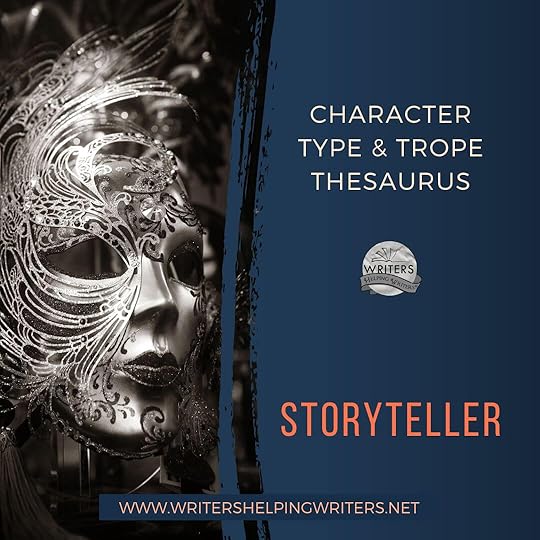
DESCRIPTION: Part historian, entertainer, and conscience, this character has a knack for storytelling through oration, song, poetry, the written word, or other creative means. Their stories often challenge societal norms and raise important questions for listeners.
FICTIONAL EXAMPLES: Scheherazade (One Thousand and One Nights), Karen Blixen (Out of Africa), Jaskier (The Witcher), Clopin Trouillefou (Disney’s The Hunchback of Notre Dame)
COMMON STRENGTHS: Creative, Curious, Empathetic, Enthusiastic, Focused, Imaginative, Inspirational, Intelligent, Passionate, Pensive, Perceptive, Persuasive, Philosophical, Playful, Spontaneous, Whimsical, Wise, Witty
COMMON WEAKNESSES: Catty, Confrontational, Gossipy, Manipulative, Melodramatic, Mischievous, Temperamental, Vain, Verbose
ASSOCIATED ACTIONS, BEHAVIORS, AND TENDENCIES
Being gifted at distilling complicated ideas down to a message people can understand
Being comfortable addressing a crowd
Liking the sound of their own voice
Using their gift to shine a light on injustice and right wrongs
Enjoying being the center of attention
Dominating conversations
Honing their storytelling skills
Having poor time management
Often being distracted or lost in thought
Difficulty keeping secrets
SITUATIONS THAT WILL CHALLENGE THEM
Being told something they���re not allowed to repeat
Their work being stolen
Living in a place where there is no freedom of speech
Being thrown in prison for sharing certain information
TWIST THIS TROPE WITH A CHARACTER WHO���
Is afraid of public speaking or drawing attention to themselves
Has a successful day job, with storytelling as a side gig
Has an atypical trait: Abrasive, Evil, Timid, Stingy, Vindictive, Dishonest, etc.
CLICH��S TO BE AWARE OF
The starving artist storyteller
A storyteller who is able to churn out brilliant and perfect work with little revision
The storyteller as a minor character with no arc, whose only role is to reveal truth to the hero or audience
Other Type and Trope Thesaurus entries can be found here.
 Need More Descriptive Help?
Need More Descriptive Help?While this thesaurus is still being developed, the rest of our descriptive collection (16 unique thesauri and growing) is accessible through the One Stop for Writers THESAURUS database.
If you like, swing by and check out the video walkthrough for this site, and then give our Free Trial a spin.
The post Character Type & Trope Thesaurus: Storyteller appeared first on WRITERS HELPING WRITERS��.
May 12, 2024
Release Day: The Emotion Amplifier Thesaurus Is Here (& a Giveaway!)

Another book joins the family today: The Emotion Amplifier Thesaurus: A Writer’s Guide to Character Stress and Volatility!
Writing authentic emotional reactions can be difficult when a character is the sort to hide what they feel. Whether it’s due to fear, painful past trauma, or personal insecurities, they believe that if they keep their emotions in check, it will save them from being judged, feeling vulnerable, or being viewed as weak.
Sure, self-preservation is common in the real world (don’t we all hide our feelings at times?) but in fiction, it can spell disaster.
Why? Because emotions need to be accessible to readers if we want them to care.
One way or another, our characters need to reveal what they truly feel, and this is where an emotion amplifier can be a handy tool. These states or conditions act as a challenge, conflict, and emotional destabilizer all rolled into one.
Pain, pressure, competition, mortal peril, arousal…these and other amplifiers have the power to increase a character’s volatility, making it nearly impossible for them to emotionally self-regulate. This sets them up for overreactions, misjudgments, and (hopefully) colossal mistakes they will need to fix and learn from.
A Companion to The Emotion Thesaurus
What began as a small ebooklet is now an expanded second edition that explores 52 unique amplifiers capable of causing physical, cognitive, and psychological strain. In addition to our signature descriptive lists, this companion will show you how to use amplifiers to enhance inner conflict, overturn the status quo, reveal deeper emotions & vulnerability, and create opportunities for your characters to gain self-awareness and personal growth!
A more detailed look at this book
The list of amplifiers covered in this guide
What writers are saying about The Emotion Amplifier Thesaurus
Where to find it in print and digital formats or buy direct as a PDF.
 Win a Free Workshop!
Win a Free Workshop!We are so excited for you to meet this new book we’re doing something fun to celebrate: a workshop giveaway! If you’d like to win a seat in a Zoom webinar where we’ll dive into Emotion Amplifiers and show you their superpowers, enter below.
Giveaway now closed – watch your inboxes!
Psst! Your odds are great – our Zoom room holds 100 seats!
The date and time for this workshop are yet to be determined, but if you win and can’t make it in person, don’t worry. A recording will be available for a limited time.
Enter by May 17th, and good luck!
Don’t forget to let your writing friends and clients know about this giveaway – we’d love to see you all win seats!
The post Release Day: The Emotion Amplifier Thesaurus Is Here (& a Giveaway!) appeared first on WRITERS HELPING WRITERS��.
Release Day: The Emotion Amplifier Thesaurus Is Here!

Another book joins the family today: The Emotion Amplifier Thesaurus: A Writer’s Guide to Character Stress and Volatility!
Writing authentic emotional reactions can be difficult when a character is the sort to hide what they feel. Whether it’s due to fear, painful past trauma, or personal insecurities, they believe that if they keep their emotions in check, it will save them from being judged, feeling vulnerable, or being viewed as weak.
Sure, self-preservation is common in the real world (don’t we all hide our feelings at times?) but in fiction, it can spell disaster.
Why? Because emotions need to be accessible to readers if we want them to care.
One way or another, our characters need to reveal what they truly feel, and this is where an emotion amplifier can be a handy tool. These states or conditions act as a challenge, conflict, and emotional destabilizer all rolled into one.
Pain, pressure, competition, mortal peril, arousal…these and other amplifiers have the power to increase a character’s volatility, making it nearly impossible for them to emotionally self-regulate. This sets them up for overreactions, misjudgments, and (hopefully) colossal mistakes they will need to fix and learn from.
A Companion to The Emotion Thesaurus
What began as a small ebooklet is now an expanded second edition that explores 52 unique amplifiers capable of causing physical, cognitive, and psychological strain. In addition to our signature descriptive lists, this companion will show you how to use amplifiers to enhance inner conflict, overturn the status quo, reveal deeper emotions & vulnerability, and create opportunities for your characters to gain self-awareness and personal growth!
A more detailed look at this book
The list of amplifiers covered in this guide
What writers are saying about
The Emotion Amplifier Thesaurus
Where to find it in print and digital formats.
 Win a Free Workshop!
Win a Free Workshop!We are so excited for you to meet this new book we’re doing something fun to celebrate: a workshop giveaway! If you’d like to win a seat in a Zoom webinar where we’ll dive into Emotion Amplifiers and show you their superpowers, enter below.
ENTER THIS GIVEAWAYPsst! Your odds are great – our Zoom room holds 100 seats!
The date and time for this workshop are yet to be determined, but if you win and can’t make it in person, don’t worry. A recording will be available for a limited time.
Enter by May 17th, and good luck!
Don’t forget to let your writing friends and clients know about this giveaway – we’d love to see you all win seats!
The post Release Day: The Emotion Amplifier Thesaurus Is Here! appeared first on WRITERS HELPING WRITERS��.
May 11, 2024
Character Type & Trope Thesaurus: Queen Bee
In 1959, Carl Jung first popularized the idea of archetypes���”universal images that have existed since the remotest times.” He posited that every person is a blend of these 12 basic personalities. Ever since then, authors have been applying this idea to fictional characters, combining the different archetypes to come up with interesting new versions. The result is a sizable pool of character tropes that we see from one story to another.
Archetypes and tropes are popular storytelling elements because of their familiarity. Upon seeing them, readers know immediately who they’re dealing with and what role the nerd, dark lord, femme fatale, or monster hunter will play. As authors, we need to recognize the commonalities for each trope so we can write them in a recognizable way and create a rudimentary sketch for any character we want to create.
But when it comes to characters, no one wants just a sketch; we want a vibrant and striking cast full of color, depth, and contrast. Diving deeper into character creation is especially important when starting with tropes because the blessing of their familiarity is also a curse; without differentiation, the characters begin to look the same from story to story.
But no more. The Character Type and Trope Thesaurus allows you to outline the foundational elements of each trope while also exploring how to individualize them. In this way, you’ll be able to use historically tried-and-true character types to create a cast for your story that is anything but traditional.
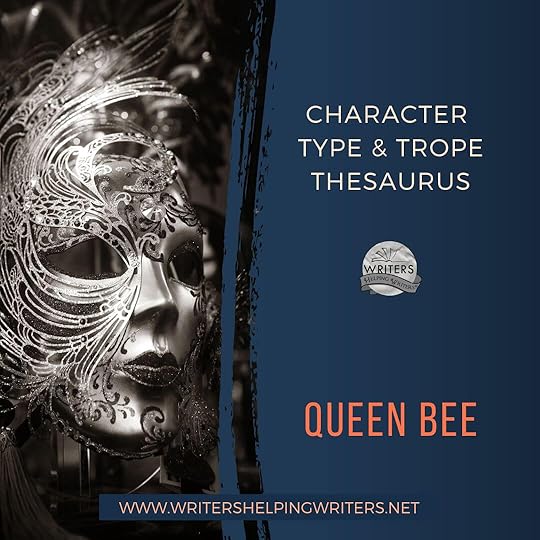
DESCRIPTION: An attractive and popular girl or woman who uses her status, control, and powers of manipulation to maintain her social standing or put people (especially other females) in their place.
FICTIONAL EXAMPLES: Cersei Lannister (A Song of Fire and Ice series), Hilly Holbrook (The Help), Regina George (Mean Girls), Heather Chandler (Heathers), Kathryn Merteuil (Cruel Intentions)
COMMON STRENGTHS: Alert, Ambitious, Analytical, Bold, Charming, Confident, Decisive, Diplomatic, Extroverted, Intelligent, Observant, Organized, Persistent, Persuasive, Sophisticated, Spunky, Uninhibited
COMMON WEAKNESSES: Abrasive, Callous, Catty, Confrontational, Controlling, Cowardly, Cruel, Dishonest, Fussy, Greedy, Haughty, Hostile, Hypocritical, Inflexible, Irrational, Jealous, Judgmental, Manipulative, Materialistic, Melodramatic, Possessive, Pushy, Selfish, Spoiled, Stubborn, Vindictive
ASSOCIATED ACTIONS, BEHAVIORS, AND TENDENCIES
Being assertive and confident
Valuing status and power
Taking great pains with her personal appearance
Being able to work a room
Enjoying attention and being in the spotlight
Being skilled at identifying other people���s weaknesses
Holding those in her inner circle to a high standard
Pitting followers against each other
Using fear or intimidation as a control tactic
Responding poorly to change; not pivoting easily
SITUATIONS THAT WILL CHALLENGE THEM
Encountering someone who won���t be manipulated or controlled
Having to move to a new area or social group and rebuild her position from scratch
Moving to a new school, job, city, etc., where the rules are different and her methods are ineffective
Encountering collective resistance from followers who used to be loyal
TWIST THIS TROPE WITH A CHARACTER WHO���
Has a hidden vulnerability she goes to great lengths to conceal, such as domestic abuse or a person she���s protecting
Loses her position and has to create a new life for herself
Has an atypical trait: Socially Aware, Introverted, Appreciative, Self-Destructive, etc.
CLICH��S TO BE AWARE OF
The shallow and self-centered queen bee who has no underlying reason for her behavior beyond wanting to be popular
Other Type and Trope Thesaurus entries can be found here.
 Need More Descriptive Help?
Need More Descriptive Help?While this thesaurus is still being developed, the rest of our descriptive collection (16 unique thesauri and growing) is accessible through the One Stop for Writers THESAURUS database.
If you like, swing by and check out the video walkthrough for this site, and then give our Free Trial a spin.
The post Character Type & Trope Thesaurus: Queen Bee appeared first on WRITERS HELPING WRITERS��.
May 9, 2024
10 Reasons Why Emotion Amplifiers Are Good for Your Story

We’re just a few days away from releasing a new book, The Emotion Amplifier Thesaurus: A Writer’s Guide to Character Stress and Volatility, so things are getting exciting around here! May 13th is the magical date, so I hope you’ll stop in and help us celebrate!
What makes this book special is that it’s the grown-up version of a small digital booklet we released long ago, a companion to The Emotion Thesaurus. Amplifiers are special states and conditions that have the power to make your character emotionally reactive. Whether it’s an amplifier like pain, scrutiny, pregnancy, or something else, when something starts messing with a character’s psychological and emotional equilibrium, that’s bad for them, but good for the story. Needless to say, we had to come back to this topic and explore it in full!

Emotion Amplifiers are unbelievably good for a story. In addition to making a character emotionally volatile, here are 10 more reasons to include them:
1. Amplifiers make it harder for characters to hide what they feel.Characters are like people–they often mask what they feel to avoid judgment, vulnerability, and the perception that they are weak. But if your character is hungover, enduring high levels of scrutiny, or it’s been ten hours since they last had a cigarette (withdrawal), it becomes harder to keep their emotions in check. A slip–forgetting their filter, telling someone off–and suddenly their emotions are on full display.
2. Amplifiers are great for uncovering a character’s faults, flaws, and sensitivities.Characters are motivated to control events around them as much as possible, which can make them seem more capable and strong than they actually are. Derailing their plans with an amplifier is a great way to show readers they don’t have it all together and can lose their emotional grip just like anyone else.
3. Amplifiers infuse scenes with tension.
When a character’s stress levels are heightened because of an amplifier like hunger, illness, or pain, the reader becomes glued to the page, wondering if the character will be able to handle the extra strain.
When a reader is unsure of what will happen next, the tension they feel causes them to read on…exactly what we want!
4. Amplifiers generate conflict.Sometimes your character can manage the strain of an amplifier, and sometimes they can’t. If distraction, sleep deprivation, or even attraction causes your character’s attention to drift, they could fail to spot a threat or worse, taking their situation from bad to worse.
5. Amplifiers can help make a character relatable.Most amplifiers are common enough that readers have experienced them themselves, or at least know the challenge they represent. So when a character is struggling with something like stress, pressure, or bereavement, readers relate to the character because this situation feels like common ground.
6. Amplifiers pressure characters to deal with their inner conflict.
It can be tempting to ignore personal problems when there’s a difficult decision to be made, but if characters continue to avoid the hard stuff, readers will disengage.
Deploying an amplifier at the right time can make the character’s situation untenable, forcing them to search within and find a way to change their situation for the better, even if this means a cost or sacrifice.
7. Amplifiers provide the opportunity to grow.In a story, characters should make plenty of mistakes so they can learn from them. Letting emotions take over because of an amplifier like addiction, burnout, or confinement might mean taking a foolish risk, doing or saying something that damages their reputation, or creating big problems for themselves. Dealing with the fallout of bad decisions and emotional volatility will teach them to find a better way next time.
8. Amplifiers support your story’s structure.Stories contain a framework of turning points and characters must move from one stage to the next for the story to progress. The problem? Fear can make them resistant to take on certain challenges, and they become resistant to leaving their comfort zone. An amplifier like danger, dehydration, arousal, or physical disorientation can force them to march into the unknown so they can secure what they need most.
9. Amplifiers give the story’s premise or conflict scenario a fresh edge.Stories naturally contain elements and scenarios that will be similar, especially within a genre. The addition of an amplifier, perhaps one like brainwashing, an injury, mental health condition, or intoxication, will help readers see your events as unique, and give you a way to show a character’s individuality in the way that they handle the challenge.
10. Amplifiers encourage readers to connect with your characters on a deeper level.Amplifiers are familiar to readers as these states and conditions are part of the human experience. When an amplifier brings a character’s emotions close to the surface, readers can’t help but be reminded on their own emotions and humanity. This fosters empathy and connection, and the reader becomes invested in what happens next.

Becca and I explore over 50 different amplifiers in this second edition of The Emotion Amplifier Thesaurus and as a companion guide, each entry is styled very close to The Emotion Thesaurus.
For an advanced look at all 52 amplifiers and a peek at some of the thesaurus entries, just go here.
I hope to see you back here on May 13th for our official book release & celebration!
The post 10 Reasons Why Emotion Amplifiers Are Good for Your Story appeared first on WRITERS HELPING WRITERS��.
May 4, 2024
Character Type & Trope Thesaurus: Mafia Don
In 1959, Carl Jung first popularized the idea of archetypes���”universal images that have existed since the remotest times.” He posited that every person is a blend of these 12 basic personalities. Ever since then, authors have been applying this idea to fictional characters, combining the different archetypes to come up with interesting new versions. The result is a sizable pool of character tropes that we see from one story to another.
Archetypes and tropes are popular storytelling elements because of their familiarity. Upon seeing them, readers know immediately who they’re dealing with and what role the nerd, dark lord, femme fatale, or monster hunter will play. As authors, we need to recognize the commonalities for each trope so we can write them in a recognizable way and create a rudimentary sketch for any character we want to create.
But when it comes to characters, no one wants just a sketch; we want a vibrant and striking cast full of color, depth, and contrast. Diving deeper into character creation is especially important when starting with tropes because the blessing of their familiarity is also a curse; without differentiation, the characters begin to look the same from story to story.
But no more. The Character Type and Trope Thesaurus allows you to outline the foundational elements of each trope while also exploring how to individualize them. In this way, you’ll be able to use historically tried-and-true character types to create a cast for your story that is anything but traditional.
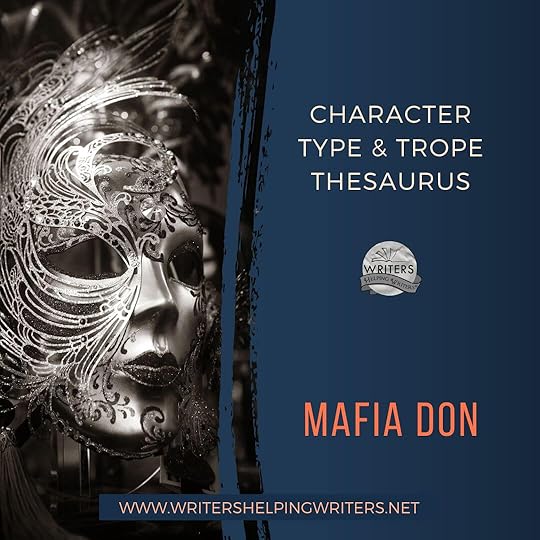
DESCRIPTION: This patriarch of a crime family is cutthroat, calculating, fiercely loyal, and holds to a deeply ingrained moral code that may not translate for others.
FICTIONAL EXAMPLES: Don Vito Corleone (The Godfather), Tony Soprano (The Sopranos), Carmine Falcone (the DC Universe)
COMMON STRENGTHS: Analytical, Bold, Confident, Courageous, Decisive, Focused, Industrious, Loyal, Observant, Patient, Persistent, Private, Proactive, Protective, Responsible, Traditional
COMMON WEAKNESSES: Abrasive, Callous, Confrontational, Controlling, Devious, Evasive, Hostile, Inflexible, Manipulative, Obsessive, Prejudiced, Pushy, Sleazy, Stubborn, Suspicious, Temperamental, Unethical, Vindictive, Violent
ASSOCIATED ACTIONS, BEHAVIORS, AND TENDENCIES
Being a strong leader
Being loyal to their family and expecting unquestioning loyalty in return
Commanding respect
Following a specific code of ethics and expecting their family to do the same
Viewing their crime family as blood family
Displaying wealth and living an opulent lifestyle
Thinking critically and strategically
Pandering to, blackmailing, and coercing people in high places who can be of use to the family
Having few (or no) people they are truly vulnerable with
Using violence and intimidation to achieve their goals
SITUATIONS THAT WILL CHALLENGE THEM
Another crime lord horning in on their territory or criminal niche
Being betrayed by someone they���ve been grooming to replace them
Coming under intense investigation by law enforcement
TWIST THIS TROPE WITH A CHARACTER WHO���
Is reluctant to take over the role of don because they lack the necessary ruthlessness and cunning
Is a strong and capable female don
Has an atypical trait: Empathetic, Nervous, Needy, Sentimental, Trusting, etc.
CLICH��S TO BE AWARE OF
The traditional Italian-American, cigar-smoking mob boss who lavishes care on his family while maintaining his position in the community with an iron fist
The ruthless and violent don with a spiderweb of connections within corrupt law enforcement
Other Type and Trope Thesaurus entries can be found here.
 Need More Descriptive Help?
Need More Descriptive Help?While this thesaurus is still being developed, the rest of our descriptive collection (16 unique thesauri and growing) is accessible through the One Stop for Writers THESAURUS database.
If you like, swing by and check out the video walkthrough for this site, and then give our Free Trial a spin.
The post Character Type & Trope Thesaurus: Mafia Don appeared first on WRITERS HELPING WRITERS��.
May 2, 2024
Differentiate Your Character with a Talent or Skill

One worry that can plague writers is whether their characters are original enough or not. After all, readers meet a lot of characters over time, so how can writers make sure their characters are fresh and interesting? How can they make sure their story���s cast has that WOW factor that ensures they stay with readers long after the book closes?
Luckily there���s a myriad of ways to make a character stand out through their personality, belief system, struggles, interests, and more. Characters will also have their own unique backstories, motivations and needs. This is why making time to uncover their inner layers is always worthwhile.
Today, let���s look at a specific area of characterization that can help you individualize your character: Talents & Skills.
Got Skills?
In the real world, we all have certain abilities. Maybe we have strong listening skills that help us get to the heart of a matter quickly so we can undo misunderstandings. Or we can haggle well and always manage to get a better price. Whether it���s singing, skiing, welding, or transforming pop cans into an ingenious whirligigs, talents and skills help make us interesting and memorable, and can do the same for characters.
As you can imagine, there���s a cargo ship of possibilities when it comes to special abilities. Some will have a big impact on the story too, so we want to think carefully about what talents our characters might possess. Start by considering���
A special ability should originate from your character. What fits with their personality, interests, education, or environment?
Think about what will happen in the story, and the problems the character must navigate. What skills might help them get past hurdles (and hopefully encourage inner growth)?
Consider their story role. A main character will face a crucible of conflict to reach their goal, and their special ability may influence events and/or be part of their growth arc. A lesser character���s skills, however, may not have the same level of importance.
Bottom line, a character���s giftedness shouldn���t be random. Considering the different types of talents and skills and how they can serve the story can provide lots of ideas, too.
Some abilities are rarer than others, like the ability to talk to the dead, start fires with the mind, throw one���s voice, or use mentalism to gain information and influence others. When we want a character to really stand out we often think about giving them an unusual talent. And that���s fine as long as we know there���s a trade off: unusual talents generate questions that readers will expect to be answered in the story:
*How did this talent come about?
*When did the character discover it?
*Are they alienated because of this ability, or embraced for it?
*And finally, how will their skill impact the story?
This last one leads us to another reader expectation: that this exceptional ability will influence the story in a bigger way. So, if you choose an unusual talent, make sure to follow through on this expectation.
An Ordinary Talent or Skill
Some abilities seem a bit bland, like being skilled at fishing, sewing, or being good with numbers. You might be tempted to skip these and move on to something cooler like being able to hot-wire a car or throw knives.

Spoiler alert: ordinary skills can save the day, too!
*A skilled fisherman can be the only thing standing between villagers and starvation during a harsh winter in a lakeside community.
*A talented seamstress might save lives on the battlefield.
*Having a head for numbers might be how your character helps everyone survive when an Escape Room excursion turns into a psychopath���s maze of puzzles and traps.
Ordinary skills can have a big impact on the story in the right situation. They also resonate and feel realistic to readers. And there���s a message readers connect with, too: that anyone can make a difference, not just the Alphas of the world.
A Useful Talent or Skill
Most often writers choose a skill because it will help their character win. To find the right match, think about what problems the character will face and list out what abilities would help them navigate these situations. Then, challenge yourself to find options that aren���t obvious.
For example, a captive who is a skilled chess player can use strategy and out-of-the-box thinking to escape her captor. A teen who loves parkour might be the group���s only hope of climbing a cavern wall to the surface after a cave-in collapses the tunnel leading out.
���The perfect skill for X situation��� can feel contrived to readers, so work to find something that fits the character���s personality, interests, and everyday life.
A Genre-Friendly Talent or Skill
Some talents and qualities show up consistently in certain genres. Billionaire playboys in romances are often charmers with money-making abilities, and tech-thrillers will have someone skilled in computer hacking. Write fantasy? Chances are your band of adventurers will have wilderness navigation, archery, lying, and leadership skills covered.
It���s okay to choose talents and skills common to your genre if you challenge yourself to twist them into something fresh. Maybe your billionaire doesn���t use his charm to bed anyone���instead he smiles his way into securing fat donations for his charitable foundation. Your computer hacker could be a Robin Hood in disguise by taking the paydays of online scammers and returning money to bank accounts of those scammed. Your adventurers can have the perfect skills for a hallmark quest but when they are transported to a foreign landscape full of unknowns, they must adapt their talents to suit.
With a bit of extra thought, there���s always a way to turn a common trope or premise into something fresh.
An Unwanted Talent or Skill
Sometimes a character has an ability they wish they didn���t have. Maybe being a natural peacekeeper means constantly being embroiled in family drama, or good intuition means less mistakes, sparking jealousy among peers. An ability to build explosives could land your character into trouble when a cruel king forces him to make bombs that kill those who stand against the crown.
An unwanted skill can also open the box to internal reflections part of character arc. The unhappiness tied to their ability causes them to think about who they are, who they want to be, and how much this skill controls how they see themselves. This can lead to finding a positive way to use their skill so they gain greater fulfillment.
A Seemingly Useless Talent or Skill
Finally, a great way to subvert expectations is to give your character a talent that seems deceptively useless. Maybe they can solve a Rubik Cube puzzle one-handed, or their steady hands come in handy as a house painter who has to tackle the window trim. Exciting stuff, right?
But what if their dexterity saves them in an emergency? Maybe to help a friend escape wrongful imprisonment they have to they have to pickpocket a key card. Or to undo a curse they must collect magical berries nestled within a thicket of poisonous thorns. Useless talents can transform your story if used the right way!
 TIP: Choose a talent or skill that makes your character memorable and helps them achieve their goals.
TIP: Choose a talent or skill that makes your character memorable and helps them achieve their goals.If this is something you���d like to learn more about, you might find these resources helpful. You can also see the full collection of talent and skill entries in their entirety at One Stop For Writers, where all our thesauruses are cross-referenced and linked for easy navigation. If you���re interested in seeing a free sampling of the Talent and Skill Thesaurus and our other descriptive collections, head on over and register at One Stop!
The post Differentiate Your Character with a Talent or Skill appeared first on WRITERS HELPING WRITERS��.
April 30, 2024
Three Essentials for Engaging Reader Emotion in the Setup
As authors, we all know the importance of engaging our audience within a book���s first few pages. Grabbing the reader: captivating them in a way that makes them want to stick with the story to its end.
But Michael Hauge prefers a different term for this phenomenon:
No one likes to be grabbed. It’s a jarring, unpleasant experience. A far better way to approach the opening of your script (or novel) is to realize you’ve got to seduce the reader in the first ten pages. Everybody likes to be seduced; it’s a gradual, enjoyable, and emotionally involving experience that thoroughly captures our attention.
(Writing Screenplays That Sell)

Whatever your terminology, drawing in readers is a vitally important process that needs to happen at the beginning of your story. Also called the setup, it���s everything that occurs before the all-important catalyst that propels your character out of their regular world into a new one.
According to Blake Snyder (Save the Cat), the setup should consist of roughly the first 12% of your story. This is a guideline you can set in stone or take with a grain of salt, depending on your plotting/pantsing style. But 12% is a good rule of thumb because it���s enough real estate to set the stage and draw readers in without it dragging on and putting them to sleep.
Unfortunately, we can get the length of the setup right and still not achieve the goal of pulling readers in. To do this, we have to tap into their emotions. If we don���t make them feel, they won���t be invested in the character; if they���re not invested in the character, they won���t care what happens and won���t keep reading to see what happens. So it���s incredibly important that the setup elicit emotion from the reader. There are a few things you can include in your opening pages that will help accomplish this.
Character EmpathyReaders start reading a book for a variety of reasons: they liked the premise, it was a recommended by a friend, they���re a fan of the author. Readers keep reading because they connect with the characters. We have a very small window���that first 12%���to achieve the reader-character connection, and eliciting empathy is a great way to make it happen. Here are a few ways to encourage that special something between the reader and your protagonist.
Universal NeedsReaders like characters they can relate to in some way. One way to bond your audience of unique individuals to the protagonist is to remove one of their basic human needs, such as belonging or surviving. Because everyone understands these needs, taking one of them away from your hero can endear readers to them.
This is one reason Katniss Everdeen was such a successful protagonist. Most readers couldn���t relate to her circumstances of having to kill others to survive, but they could understand needing to protect a vulnerable loved one or providing for one���s family. If you want to increase your reader���s empathy for the hero, try taking away a universal need, and the reader will stay tuned to see if she can get it back.
AdmirabilityPeople are drawn to those they admire, so it���s a good idea to give your hero some qualities that readers will appreciate or aspire to themselves. Intelligence, a sense of humor, kindness, generosity, honor���these are attributes people long for. Seeing them personified in the hero opens us up to them, making us want them to do well.
Notice that I didn���t say a protagonist must be likable (though that works, too). As a selfish and manipulative character, Scarlett O���Hara isn���t exactly a glowing role model, but people relate to her because of her shrewdness, tenacity, and confidence. It���s her admirable qualities that win readers over.
UniquenessReaders, along with editors, agents, and publishers, are tired of seeing new versions of the same old characters. We want someone who surprises us with something new. A janitor who anonymously and effortlessly solves impossible math theorems at M.I.T. (Good Will Hunting). An art student in Prague who collects teeth for the demons who raised her (Daughter of Smoke and Bone). When you���re creating your protagonist, see what you can do to make them stand out from the crowd and be remembered.
RemarkabilityFew people truly excel in any area, but most would like to. Characters who are remarkable in some way speak to our need for esteem and recognition, whether it���s because they���re intelligent, incredibly talented, or have an unusual ability. Make your character extraordinary and readers will often respond.
ConflictWell-written conflict inherently elicits emotion���anticipation, yes, as the reader worries about the protagonist���s well being, but it also can generate feelings like nervousness, frustration, or fear. Create a situation many readers have experienced or can imagine going through, and you���ve added relateabilty, too.
This conflict can be overt and obvious, such as a fistfight, terrorist attack, or someone fleeing for their life. But this doesn���t always work in the setup because the reader hasn���t had enough time to get to know the protagonist and care about what happens to them. Conflict at this stage is often more effective when it���s hinted at or implied.
In Stephen King���s Under the Dome, we first see Dale Barbara as he���s leaving town after ���taking a pretty good beating at The Mill.��� That���s the only reference to his altercation, but it���s enough to tweak the reader���s empathy meter and pique interest. Why���d he get beaten up? Who did it? If he���s innocent, why is he leaving town?
Conflict can also be internal rather than external. A character struggling with an important decision, questioning themselves, or denying a wounding event from the past can be just as compelling as a five-care pileup. However it manifests, be sure to include some conflict in your setup; done well, not only will it tug the reader���s heartstrings but it will keep up the pace, too.
The Need For Change
Most people���readers included���want to improve and grow, to be better tomorrow than they were yesterday. They understand that change, though difficult and sometimes painful, is needed in order to achieve growth. This is why, at their most basic level, stories are about necessary change. Sometimes this change is internal, played out through the character���s arc as they work to overcome fears or wounding events and embrace the fullest version of themselves. Sometimes it���s external���something within the world itself that needs fixing, such as the existence of the one ring in Tolkien���s Middle Earth. The most compelling stories often contain elements of change that are both internal and external.
The setup is the perfect place to show what needs to be changed for your character; it allows you to hint at what has to happen for them to be fulfilled by the story���s end. Sometimes this means showing their biggest flaw, the one they think is a strength but is really crippling them. In other cases, it might require showing an inequality or injustice in the world that they must alter in order to pursue her dreams. What has to change before the character can achieve their overall goal? Reference this in your opening pages and you���ll clue readers in to what has to happen for your hero to emerge victorious.
Story setups are tricky; we always want to include more information than they need. To stay on the straight and narrow, remember the two-fold purpose of the setup: introduce the character in their everyday world, and draw readers in by activating their emotions. Stay focused on these outcomes, and you���re on your way to drafting a story start that will keep readers engaged well beyond the opening pages.
PRO TIP: The Story Maps tool at��One Stop For Writers��can help you organize your setup and other important turning points while keeping them in proper proportion.
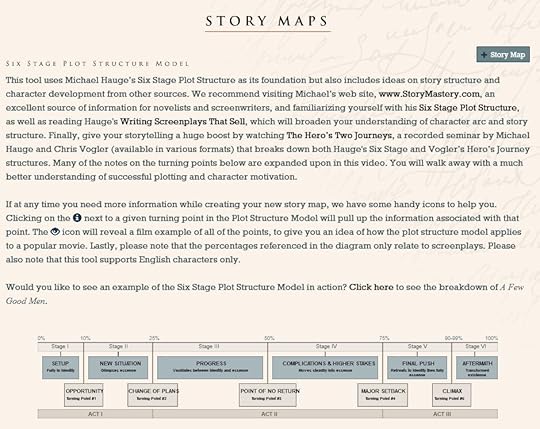
The post Three Essentials for Engaging Reader Emotion in the Setup appeared first on WRITERS HELPING WRITERS��.
April 27, 2024
Character Type & Trope Thesaurus: Nice Guy/Girl
In 1959, Carl Jung first popularized the idea of archetypes���”universal images that have existed since the remotest times.” He posited that every person is a blend of these 12 basic personalities. Ever since then, authors have been applying this idea to fictional characters, combining the different archetypes to come up with interesting new versions. The result is a sizable pool of character tropes that we see from one story to another.
Archetypes and tropes are popular storytelling elements because of their familiarity. Upon seeing them, readers know immediately who they’re dealing with and what role the nerd, dark lord, femme fatale, or monster hunter will play. As authors, we need to recognize the commonalities for each trope so we can write them in a recognizable way and create a rudimentary sketch for any character we want to create.
But when it comes to characters, no one wants just a sketch; we want a vibrant and striking cast full of color, depth, and contrast. Diving deeper into character creation is especially important when starting with tropes because the blessing of their familiarity is also a curse; without differentiation, the characters begin to look the same from story to story.
But no more. The Character Type and Trope Thesaurus allows you to outline the foundational elements of each trope while also exploring how to individualize them. In this way, you’ll be able to use historically tried-and-true character types to create a cast for your story that is anything but traditional.
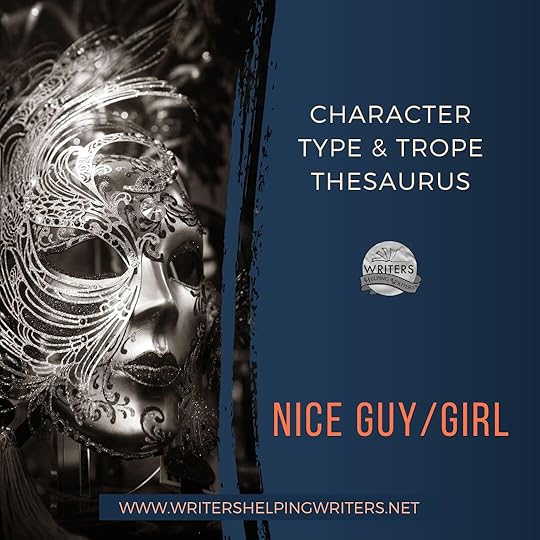
DESCRIPTION: Nice guys and girls are decent, kind, morally upright, and are generally liked by everyone. They’re similar in personality to the Girl or Boy Next Door, but while the latter is often a love interest for the protagonist, nice people make great friends and allies.
FICTIONAL EXAMPLES: Samwise Gamgee (The Lord of the Rings), Beth (Little Women), Cassian (A Court of Thorns and Roses), Neville Longbottom (the Harry Potter series), Goose (Top Gun)
COMMON STRENGTHS: Affectionate, Cautious, Courageous, Easygoing, Empathetic, Friendly, Generous, Honest, Honorable, Humble, Innocent, Just, Kind, Loyal, Nurturing, Patient, Responsible, Sensible, Supportive, Trusting, Wise
COMMON WEAKNESSES: Childish, Cowardly, Foolish, Gullible, Indecisive, Inhibited, Insecure, Needy, Oversensitive, Subservient, Timid, Weak-Willed, Worrywart
ASSOCIATED ACTIONS, BEHAVIORS, AND TENDENCIES
Being a good listener
Thinking more about others than about themselves
Being protective of friends and family
Authenticity
Checking on people regularly
Being a great ally and friend
Remembering birthdays and personal events
Not always practicing good self-care (because they���re caring for others)
Being an easy mark for someone with selfish motivations
Being viewed as boring
SITUATIONS THAT WILL CHALLENGE THEM
Being betrayed by someone close to them
Being wrongly accused of unkindness, cruelty, or hypocrisy
An emergency occurring when the character is needed elsewhere
TWIST THIS TROPE WITH A CHARACTER WHO���
Is flawed and wrestles with personal demons
Has a short fuse
Is the protagonist instead of a supporting character
Has an atypical trait: Catty, Flirtatious, Jealous, Nosy, Rowdy, Scatterbrained, etc.
CLICH��S TO BE AWARE OF
The one-dimensional nice guy with no flaws or nuance to their character
The nice girl who���s so busy helping others she doesn���t have a life of her own
Other Type and Trope Thesaurus entries can be found here.
 Need More Descriptive Help?
Need More Descriptive Help?While this thesaurus is still being developed, the rest of our descriptive collection (16 unique thesauri and growing) is accessible through the One Stop for Writers THESAURUS database.
If you like, swing by and check out the video walkthrough for this site, and then give our Free Trial a spin.
The post Character Type & Trope Thesaurus: Nice Guy/Girl appeared first on WRITERS HELPING WRITERS��.
Writers Helping Writers
- Angela Ackerman's profile
- 1022 followers



